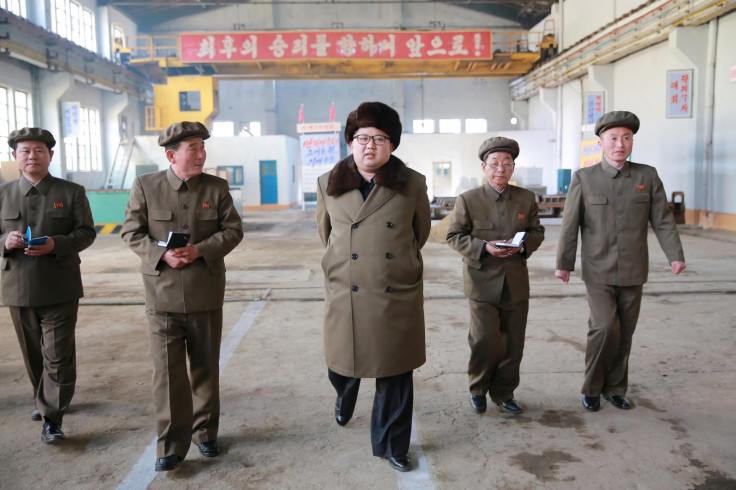South Korea's 'decapitation unit': All you need to know of the elite force tasked to eliminate Kim Jong-un
South Korea launched the special brigade on 1 December, two days after North Korea conducted a long-range ICBM test.
North Korea's supreme leader, Kim Jong-un, delivered on his promise of developing a long-range intercontinental ballistic missile (ICBM) capable of hitting the US mainland. He had made the promise in a warning targeted at the US and its allies during his New Year speech in December 2016.
The warning became a reality in just about a year when the dictator oversaw the "successful" test-firing of the Hwasong-15 ICBM on 29 November this year. The missile was said to be the most powerful projectile the country has tested so far. It covered a distance of nearly 1,000km and reached a height of 2,500km before landing in Japanese waters.
The hermit kingdom, known for aggressively pursuing a nuclear programme, also conducted its largest ever nuclear test this year on 3 September, following which Kim proudly announced North Korea's inclusion among the major nuclear powers in the world.
These actions have attracted global condemnation, with the United Nations tightening sanctions against the country, and the US, South Korea and Japan beefing up security measures in and around the Korean peninsula.
Military deployments and training exercises in the region by the US have further infuriated the North Korean regime, with the country issuing regular threats of an "imminent" nuclear war. The threats prompted South Korea to launch a special "decapitation unit" earlier in December. Reports suggest the elite force is tasked with "eliminating" Kim Jong-un in the event of a war, but the unit has other functions as well.
"We are planning to set up a special brigade with the goal of removing or (at least) paralysing North Korea's wartime command structure (in the face of escalating threats from the communist state)," Defense Minister Han Min-koo had said in January this year.

The "three-pillar" defence system includes a "kill chain" – a pre-emptive military strategy to identify and strike North Korea's missile manufacturing facilities, the Korean Air and Missile Defense (KAMD), and the Korea Massive Punishment & Retaliation (KMPR) plan, Yonhap news agency had said in a report carrying rough details of the then proposed unit.
On Wednesday (6 December), the Seoul government announced a budget allocation for the unit that is yet to become operational.
Here are more facts about the special brigade:
- The elite force will comprise 1,000 well-trained soldiers.
- It has been set up under the South Korean army's Special Warfare Command.
- The unit was launched on 1 December in the wake of North's latest and most powerful ICBM test. However, the unit is not expected to be fully operational anytime soon as it is yet to acquire crucial assets.
- The first mention of the special brigade was made by South Korean Defense Minister Song Young-Moo in September soon after Pyongyang's sixth nuclear test.
- The army had originally planned to launch the elite force in 2019, but rising tensions in the region prompted the government to expedite the schedule by two years.
- The unit will closely resemble the US Army Rangers, SEAL Team Six, Delta Force and Green Berets in their operations.
- The unit is yet to acquire key assets such as low-flying aircraft capable of delivering and deploying special warfare teams deep into North Korean territory. The country's military is working on upgrading their transport helicopter Ch-47 Chinooks to make them fit for infiltration missions to the North.
- The main task of the brigade will be to eliminate the North Korean leadership, including Kim, in the event of a war and to attack the reclusive state's heavily-guarded missile and nuclear facilities.
- Some 340m South Korean won ($310,000) was allocated to the "decapitation unit" for the purchase of weapons during this year's budget session. The amount will be the first installment of the total budget of 43.2tn won that South Korea has set aside for defence in 2018.
- The defence ministry will increase the budget as needed, with up to $23.7m expected to be spent on boosting its combat power.
- The unit will use suicide drones, surveillance drones and grenade machine guns in addition to other modern warfare equipment.





